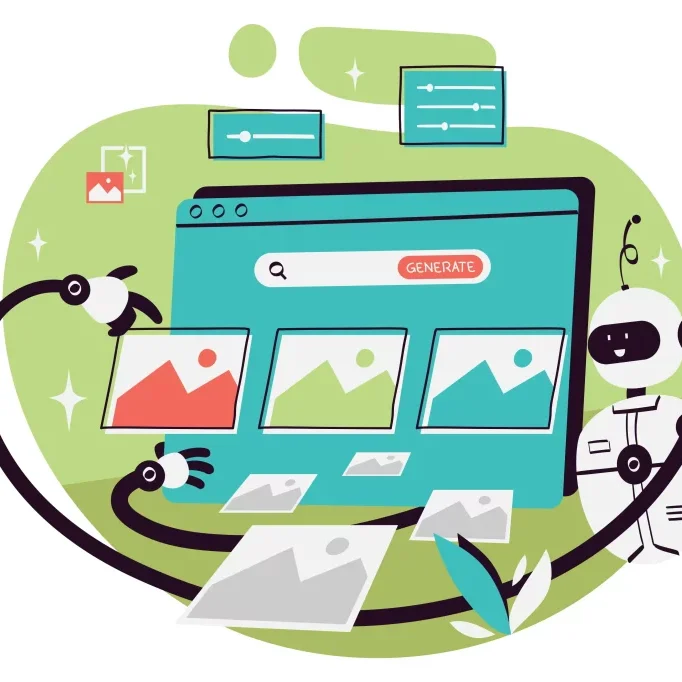Email marketing has been around for decades, and while some may think of it as outdated, it remains one of the most effective tools for engaging customers and driving growth—especially for small and medium-sized enterprises (SMEs). Email is a direct and personal way to communicate with your audience, and when paired with automation, it becomes a powerful tool that saves time and nurtures customer relationships.
In fact, email marketing delivers an average return on investment (ROI) of $36 for every $1 spent (Litmus), proving that it’s far from irrelevant. For small businesses looking to grow, automating your email marketing can help you engage with customers consistently, while focusing on other aspects of your business.
Approximate reading time: 7 minutes
Understanding Automated vs. Non-Automated Emails
Before diving into the power of automated emails, it’s important to understand the difference between automated and non-automated emails. Each serves its own purpose, and both can be useful tools in your overall email strategy.
Automated Emails
Automated emails are triggered by specific user actions or predefined conditions. They’re often referred to as “set it and forget it” emails because once you set up the workflow, they run in the background. Whether someone subscribes to your newsletter, makes a purchase, or schedules an appointment, these emails ensure consistent and personalised communication with minimal ongoing effort.
Examples of automated emails include:
- Welcome emails triggered when a new subscriber joins your email list.
- Appointment reminders sent to customers who’ve booked a consultation or service.
- Re-engagement campaigns designed to win back inactive subscribers.
Non-Automated Emails
Non-automated emails, on the other hand, are sent manually or as part of a planned campaign. These might be one-off emails, such as promotional offers, or regularly scheduled newsletters that require manual creation and scheduling. While they may not be as personalised as automated emails, they’re useful for broad-reaching updates or timely announcements.
Examples of non-automated emails include:
- Monthly newsletters with company updates, industry insights, or blog content.
- Promotional emails sent to your list to announce a sale or special event.
- Holiday greetings or seasonal offers that align with specific times of the year.
By combining both types of emails, you can create a well-rounded email strategy that keeps your audience engaged and informed at all stages of their journey.
Key Benefits of Using Automated Emails for SMEs
Automated emails are more than just a time-saver—they are a key tool for maintaining consistent communication and increasing engagement. For small and medium-sized enterprises (SMEs), where time and resources are often limited, automated emails provide several distinct advantages:
1. Consistency and Efficiency
Automated emails allow SMEs to maintain a consistent presence with their customers without needing to manually send each message. Once a workflow is set up, it runs in the background, ensuring timely delivery of emails without added effort. Whether it’s welcoming new subscribers or reminding clients of upcoming appointments, automation frees up time to focus on other business tasks.
2. Personalisation at Scale
Despite being automated, these emails can still be personalised. By triggering emails based on customer behaviour or interactions with your website, you can send relevant, personalised messages to each subscriber. This makes the customer feel valued and understood, which builds trust and increases engagement.
3. Increased Engagement
Automated emails often have higher open and click-through rates because they are sent at the right time—when a user takes a specific action, such as subscribing to your newsletter or abandoning their cart. By delivering emails that are directly tied to a user’s actions, they feel more relevant and less like mass marketing. This leads to higher engagement rates and more conversions.
Stat to include: According to Campaign Monitor, automated emails can generate 320% more revenue than non-automated campaigns, proving their effectiveness.
Three Key Automated Email Campaigns for SMEs
Automated email campaigns can be tailored to suit a wide range of industries and business goals. While there are numerous types of automated email sequences, here are three examples that work particularly well for SMEs. These are just a few examples—if we were to dive into every possible scenario, we’d be writing a book!
1. Service-Based Businesses: Appointment Reminders and Follow-Ups
Service-based businesses—like coaches, consultants, and freelancers—can use automated emails to remind clients about upcoming appointments or sessions. An appointment reminder ensures that the client remembers their booking, reducing no-shows, while follow-up emails after a session can include helpful resources, links, or upsell opportunities.
Example: After a consultation, send an automated follow-up email thanking the client for their time and offering additional services or advice.
2. SaaS (Software as a Service): Onboarding and Usage Updates
For SaaS companies, the onboarding process is critical to long-term customer success. Automated onboarding emails guide new users through the features of the software, helping them get the most out of it. Additionally, sending regular usage updates, like progress reports or feature suggestions, keeps customers engaged and helps increase retention.
Example: Send a series of automated onboarding emails that start immediately after a user signs up for a free trial, helping them navigate the platform and showcasing valuable features.
3. Professional Services: Lead Nurturing and Client Retention
For industries like law firms, accounting firms, or real estate agencies, lead nurturing and client retention are key to growth. Automated emails can nurture leads by sending relevant content based on their initial contact (e.g., case studies, industry insights) or encourage long-term clients to re-engage by offering periodic check-ins or reminders of your services.
Example: After a client’s initial consultation, send automated emails with relevant industry news or updates that showcase your expertise and keep you top-of-mind.
Stat to include: Automated emails can generate 320% more revenue than non-automated campaigns (Campaign Monitor).
How to Implement Automated Emails Without Overwhelm
For many SMEs, the idea of setting up automated email campaigns can seem daunting, especially if they’re new to the concept. The good news is that you don’t have to dive in all at once. Here are some practical steps to help you start small and build up your email automation over time:
1. Start with Simple, High-Impact Automations
Begin with a few essential workflows that deliver the most value with minimal effort, such as a welcome email series or appointment reminders. These automations are easy to set up and provide immediate results, making them a great starting point.
Example: Set up a single welcome email that is triggered every time someone subscribes to your newsletter or fills out a contact form. This email can introduce your business, thank them for joining, and provide links to relevant resources.
2. Use Affordable, User-Friendly Tools
At Kyle & Irving, we offer a customised solution for our clients, where we handle all the heavy lifting. From setting up your automations to managing them over time, we ensure that your email marketing is fully optimised and runs smoothly. For those looking to explore other options, platforms like Mailchimp, ActiveCampaign, and HubSpot also provide easy-to-use automation tools that fit small business needs.
3. Expand Gradually
Once you have a few automations in place, you can start adding more as your business grows. For example, after setting up a welcome email, consider building a follow-up email that goes out a few days later, offering additional resources or promoting a service. Over time, you can create more complex workflows like re-engagement campaigns or customer feedback requests.
Tip: Monitor your automated email performance through the analytics provided by your email platform. This helps you see which emails are performing well and identify areas for improvement.
Conclusion: Start Engaging and Growing with Automated Emails
Automated emails offer a powerful way for SMEs to maintain consistent communication with their audience, without overwhelming their team. Whether you’re a service-based business sending appointment reminders, a SaaS company onboarding new customers, or a professional services firm nurturing leads, automated emails can help you engage with your audience at the right time, driving long-term growth and customer loyalty.
By starting small with simple workflows and gradually expanding to more complex automations, you can build a highly effective email marketing strategy that works for your business.
As one character remarks in The Thing from Another World, “It’s amazing, really, everything works so perfectly.” Setting up your automated emails now will give your business the efficiency and growth potential it needs to thrive.
Looking to get started with automated emails but don’t know where to begin? At Kyle & Irving, we manage the heavy lifting for you with customised email marketing solutions designed to grow your business. Contact us today to learn how we can help.

